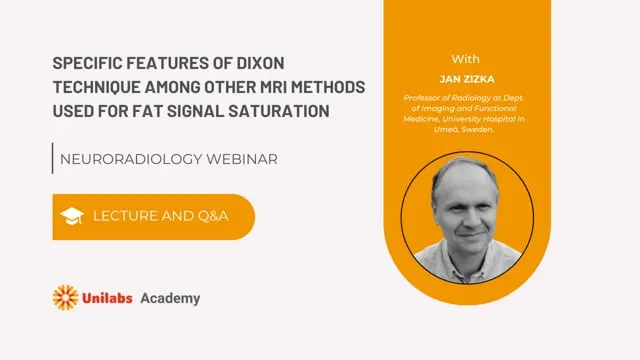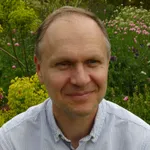
1 CME Credit
·
Abdominal Radiology, Neuroradiology, Thoracic Radiology
Specific features of Dixon technique among other MRI methods used for fat signal saturation
DIXON technique offers several unique features among all MRI techniques utilized for suppression of fat signal. The purpose of the webinar is to recapitulate principles, advantages and disadvantages of different MRI techniques of fat signal suppression such as STIR, spectral fat saturation, in- and opposed-phase imaging and water excitation and to compare them with the specific features of the DIXON technique.
Already have an account?
Topics Covered
To jump to a specific chapter, click on the chapter title once the video is playing.
00:00 - Introduction and Speaker Background
00:33 - Introduction to Dixon MRI Technique
02:00 - Principles of Fat Saturation and MRI Image Contrast
08:00 - Inversion Recovery Techniques: STIR and FLARE
12:02 - Issues with Fat Saturation in MRI
16:02 - Fat Saturation Challenges with Spectral Techniques
26:02 - Water Excitation Methods and Their Applications
33:04 - In-Phase and Opposed-Phase Imaging
42:02 - Dixon Imaging Technique and Its Advantages
46:01 - Applications of Dixon Imaging in Clinical Scenarios
63:00 - Dixon Imaging for Metallic Implant Cases
67:00 - Potential Issues and Limitations of Dixon Imaging
72:00 - Conclusion and Recommendations
77:00 - Q&A Session with the Speaker
Lecturers

Jan Zizka M.D. Ph.D.
Professor of Radiology at Dept. of Imaging and Functional Medicine, University Hospital in Umeå, Sweden.
Jan Zizka graduated at Charles University Medical School in Hradec Kralove, Czech Republic. He received his radiologic education and training at the University Hospital in Hradec Kralove, Czech Republic as well as specialized training and fellowships focused on MR imaging in Prague (Czechia), Linz (Austria) and Albany, NY (USA).
He worked as consultant radiologist at the Department of Diagnostic Radiology, University Hospital in Hradec Kralove (Czechia) and Dumfries and Galloway Royal Infirmary, Dumfries (United Kingdom). Since 2016, he has been working at the Department of Imaging and Functional Medicine, University Hospital of Umeå, Sweden.
He is the first author or co-author of 15 medical monographies and textbooks, 105 scientific articles, 83 scientific abstracts, and more than 270 oral papers.




